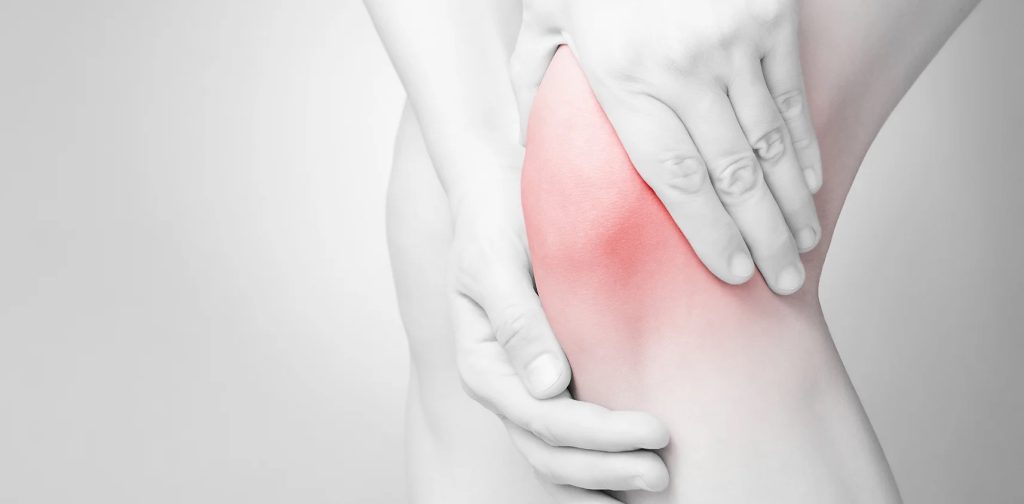
ACL Tear

Anterior Cruciate Ligament (ACL) tear
An ACL tear is one of the most common sporting injuries of the knee. It happens when there is a sudden twisting force on the knee, such as when landing after a jump or being tackled during soccer.
Sometimes the injury happens from falling from the stairs or missing a step even.
Read on to find out more about this condition!
ACL Function
This is the main ligament in the knee. It makes the knee joint stable and strong and allows a person to run and jump properly.
Who may suffer ACL tears?
Young, active persons are usually the ones who sustain ACL tears. Common sports which these patients participate in include: soccer, skiing, basketball, volleyball, netball, rugby. It has also been studied and found that females are at slightly higher risk of ACL tears. This may be due to differences in knee structure and hormones in females.
When would you suspect an ACL tear?
Commonly, an ACL tear would cause immediate pain and swelling in the knee, and the patient will be unable to continue with the sporting activity. The patient will feel that he/she is unable to bend or straighten the knee as well. After the acute symptoms settle, patients may feel that the knee is loose, weak, and easy to buckle. There will be pain on exertion of the knee.
Confirmation of an ACL tear
Both Physical examination by an Orthopaedic Surgeon and an MRI scan is needed to confirm an ACL tear.
An MRI scan shows the structural tear of the ACL when the patient is static, ie not moving, whereas physical exam lets the surgeon feel the dynamic looseness of the knee. The information from both is then utilised in suggesting a treatment plan for the patient.
What happens if an ACL tear is left alone?
The ACL is important for keeping the knee stable and strong. If a person walks a lot or even worse, persists to run on a knee without an ACL, the knee will continue to wear down and other structures such as cartilage and meniscus will start to get damaged. Medical studies show a significantly higher risk of early onset of arthritis of the knee for untreated ACLs.

Treatment of an ACL tear
An ACL tear is a ligament which does not heal properly on its own following a significant injury. Contrast that with the Medial Collateral Ligament (MCL) which can potentially heal on its own.
Therefore, many ACL tears are treated with surgery to reconstruct a new ACL. This treatment is done as a Key-Hole surgery and the surgical techniques are well-established and mature, so down-time for this treatment can be reduced.
Minor ACL injuries like sprains without tears, or a minimal tear such as a less-than-25% tear may be able to be treated with Physiotherapy. Sometimes, a biological injection can be used to stimulate healing of the ACL.
How do surgeons make a new ACL?
A main way to make a new ligament is using the patient’s own hamstring tendons. This is called a hamstring Autograft. Using the patient’s own tissues ensure 100% compatibility. Two out of three hamstrings are normally taken out and used to reconstruct the ACL. This also does not leave any significant functional deficits as the remaining hamstring reconstitutes (gets stronger) over time.
The other option is using another person’s tendon tissues (called an Allograft). Using an allograft reduces operative time, but however increases cost, and there is a very small risk of incompatibility with the patient’s tissues. Situations where allografts are preferred may be revision ACL reconstructions and multi-ligament reconstructions.
A final way which is less commonly used nowadays is to harvest a combination of bone-tendon-bone from the front of the kneecap using an open incision.
Can a reconstructed ACL re-tear many years later?
This is a possibility, if the patient were to suffer another serious knee injury. However, the overall risk of re-tear is considered low. Various factors like the patient’s activity level, or post-operative rehabilitation also affects.
Can a re-torn ACL be re-reconstructed?
Yes, this is called a Revision ACL Reconstruction. To do this, a stronger consideration may have to be made to use Allograft, especially if both the patient’s hamstrings have been utilised or a bigger graft is needed due to technical reasons. Depending on the specifics of the initial surgery, a Revision ACL Reconstruction may be done in a 1- or 2-stage treatment. This means it may be 1 or 2 surgeries in order to make a new ACL. This depends on the technical specifics of the case.
Centurion Orthopaedic Centre
38 Irrawaddy Road
Mt Elizabeth Novena Hospital Specialist Centre #07-40
Singapore 329563









